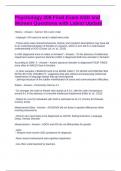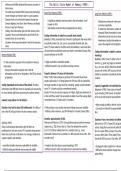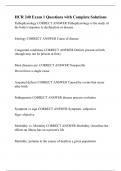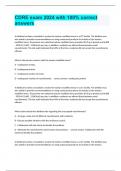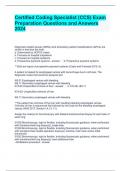Tentamen (uitwerkingen)
Psychology 208 Final Exam ASD and Women Questions with Latest Update
History - Answer-- Kanner: 8/11 were male - Asperger: 4/4 cases he wrote in detail were male - These early male-centred behavioral, clinical, and symptom descriptions may have led to an underrepresentation of females in research, which in turn led to a male-biased understanding of ASD (Chuan ...
[Meer zien]
